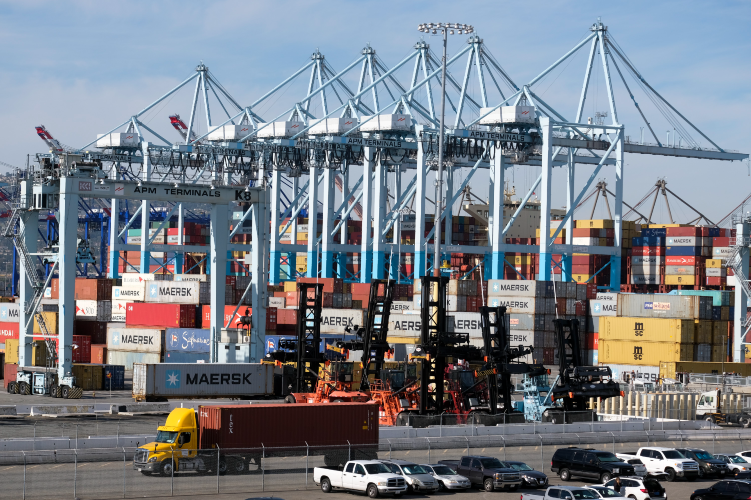
The Port of Los Angeles processed 890,800 twenty-foot equivalent units of cargo last month, a 4% increase compared to the same month in 2020 and a 2.3% dip from 912,154 TEUs during the same period in 2019.
The Port of Long Beach, meanwhile, processed 784,84
Increased volume at the ports, however, is creating a new set of challenges.
“Warehouses are overflowing, rail yards and carriages are maxed out, chassis and containers continue to be hard to come by, ships are coming in and waiting at anchor to get worked, and factories are behind in orders, even though output is at record levels,” said Port of Los Angeles Executive Director Gene Seroka during a video press conference on Aug. 17. “I think (Federal Maritime Commission Chairman Daniel Maffei) said it best recently, ‘What we’re trying to do is squeeze 10 lanes of freeway traffic down into five.’”
Congestion issues locally have affected the Midwest, where Union Pacific Corp. and BNSF Railway Co. started pausing — or metering — container transport from the West Coast to their facilities in the Chicago area.
Seroka said it was “a difficult decision” for both companies that caused on-dock rail time to increase to more than 13 days at the Port of Los Angeles, but that UPP had 25 miles of trains sitting outside its facility in Joliet, Ill., while BNSF was contending with 22 miles of backlog.
“They’re responding to similar difficulties that the ports are around the world — cargo is simply not being picked up fast enough,” he said. “Combined, they made about 15% of our overall cargo volume that was paused as a result of those recent decisions. The dwell times on rail have increased because of this, but containers had no place to go.”
“We welcomed 79 container vessels compared to 88 last year,” Seroka said. “So, while we had 10 fewer ships compared to 2020, cargo volumes still increased. That points to bigger ships and better utilization, bringing a chock full of cargo our way. In fact, the Port of Los Angeles is now averaging an exchange loading and unloading of more than 11,000 TEUs per vessel call — that’s the best in the business.”
Cargo volume at Port of L.A. for the first seven months of the year added up to 6.3 million TEUs, an increase of 36.8% compared to the same period in 2020. “We’ll finish 2021 in the range of 10.5 million TEUs,” Seroka said,.
Dockworkers and terminal operators at the Port of Long Beach also moved a substantial volume of cargo in July.
Imports were up 1.6% to 382,940 TEUs while exports decreased 20.7% to 109,951. The volume of empty containers headed back overseas jumped 22.8% to 291,955 TEUs.
July marks the 12th time that the Port of Long Beach has broken monthly cargo records in the last 13 months. Through July, the port has processed 5.5 million TEUs of cargo, a 32.3% increase over the first seven months of 2020.
“We’re going to move about 19 million TEUs this year at the San Pedro Bay complex (and) I don’t see that number diminishing in the years to come,” Port of Long Beach Executive Director Mario Cordero said on Aug. 5.
